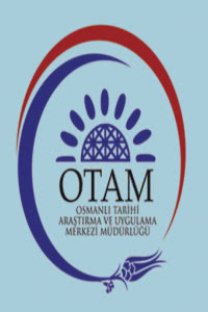Plevne Müdafaası'nda Topun Önemi
OsmanlÖ Devleti ile Rus ÇarlÖİÖ arasÖnda Nisan 1877'de baûlayÖp, Balkanlar ve Kafkaslar üzerinde iki ana cephede, Ocak 1878'e kadar dokuz ay kadar süren Doksanüç Harbi esnasÖnda, Bulgaristan sÖnÖrlarÖ içinde bulunan Plevne'nin Rus ordusu tarafÖndan muhasarasÖ beû ay kadar sürmüûtür. Asker ve silah bakÖmÖndan Türklere nazaran daha avantajlÖ durumda olan Ruslar, ûehri ele geçirmek için üç defa saldÖrÖya geçtiyseler de bekledikleri baûarÖyÖ elde edememiûlerdir. OsmanlÖ tarafÖnÖn Plevne'de baûarÖlÖ bir savunma yapmasÖnda Gazi Osman Paûa'nÖn askerî yeteneİinin, Türk askerinin dirayetinin ve mükemmel bir ûekilde hazÖrlanmÖû toprak istihkâmlarÖn etkisi oldukça büyüktür. Fakat bunlarÖn ve daha baûka etkenlerin dÖûÖnda her iki tarafÖn kullandÖİÖ toplarÖn niteliİi ve bataryalarÖn idare ûekli de çarpÖûmalarda belirleyici bir rol oynamÖûtÖr. Rus tarafÖ toprak istihkâmlar üzerinde tesir gücü oldukça düûük, erken ÖsÖnarak kullanÖlamaz hale gelen tunçtan mamul uzun namlulu ve yüksek açÖlÖ atÖûlar yapmaya elveriûli olmayan toplarÖ kullanÖrken Türk tarafÖ kÖsa mesafede yüksek açÖlÖ ve baûarÖlÖ atÖûlar yapabilen, çelikten mamul obüsleri kullanmıştır.
The Importance of the Cannon in the Defense of Plevna
The 93 War between the Ottoman Empire and the Russian Empire was fought on two main fronts, the Balkan and the Caucasus. It started in April 1877 and lasted for nine months until January 1878 and the Russian siege on Plevna within the Bulgarian borders lasted for five months. Although the Russians had an advantage over the Turks in terms of troops and weapons, they didn't achieve their desired success after trying to seize the city three times. The successful defense of Plevna by the Ottomans arose from the military capability of Ghazi Osman Pasha, the ability of the Turkish soldiers and perfectly prepared ground fortifications. But aside these and other effects, the type of cannons used by both sides and the handling of the batteries played an important role in combat. The Russians used long barreled cannons made out of bronze on the ground with extremely low power, which overheated very quickly and thus became unusable and were not suitable for high angled shots. The Turkish side however used steel howitzers that could make high angled shoots from a short distance.
___
ATASE, BLH, 734/H6/1-16BOA, ù.DH., 701/49084
BOA, A. } MKT. MHM, 482/16.
BOA, ù:DH, 756/61738.
BOA, ù.HR., 278/17016
BOA, ù.MMS., 57/2636
BOA, ù.MMS., 57/2640
BOA, Y.PRK.HR, 2/1.
BOA, Y.EE, 76/26
BOA, YEE, 76/49
Ahmed Cemal, Plevne MüdafaasÖ, ùbrahim Hilmi, ùstanbul 1316.
Ali Fuad, OsmanlÖ Rus Seferi, C. 2, Matbaa-i Osmaniye, ùstanbul 1326.
ARMAO÷LU, Fahir, Siyasi Tarih, A. Ü. Siyasal Bilgiler Fakültesi, Ankara 1975.
HakkÖ, Mevzi Muharebelerinde Topçunun Suret-i ùstimali HakkÖnda Kavaid, Erkan-Ö Harbiye Mektebi MatbaasÖ, ùstanbul 1335.
Hasan Tahsin, Rehber-i Fenn-i Esliha, ùstanbul 1313.
HERBERT, Frederick William V., The Defense of Plevna, John Murray, London 1911.
Mahmut Hüsamettin, Muharebede Topçunun ùstimali, ùstanbul 1309.
Mehmed Hulusi, Niçin Maølup Olduk? 1877-1878 OsmanlÖ Rus Seferi, SancakcÖyan MatbaasÖ, ùstanbul 1326.
Mehmet Lütfi, Esliha-i Osmaniye, ùstanbul 1308.
Miralay Halil Kemal, Her Zabit Topçuluktan Ne Bilmelidir, Askerî Matbaa, ùstanbul 1928.
NAYMAN, V., Külliyat-Ö Fenn-i Esliha, ùstanbul 1306.
RYAN, Charles S., KÖzÖlay Emri AltÖnda Plevne ve Erzurum'da, Çev. Ali RÖza Seyfioølu, MEB, ùstanbul 1962.
SÜER, Hikmet, 1877-1878 OsmanlÖ-Rus Harbi Rumeli Cephesi, ATASE, Ankara 1993.
úùROKORAD, A. B., RuslarÖn Gözünden 240 YÖl KÖran KÖrana OsmanlÖ-Rus SavaûlarÖ, Selenge YayÖnlarÖ, ùstanbul 2009.
Talat, "Plevne MüdafaasÖ", Mecmua-i Askerî, S. 7, ùstanbul 1927, s. 1-231.
UÇAR, Nail, Gazi Osman Paûa ve Plevne, Orkun YayÖnevi, ùstanbul 1978.
UÇAROL, Rifat, Siyasi Tarih, Filiz YayÖnlarÖ, ùstanbul 2000.
- ISSN: 1019-469X
- Yayın Aralığı: Yılda 2 Sayı
- Başlangıç: 2006
- Yayıncı: Ankara Üniversitesi Osmanlı Tarihi Araştırma ve Uygulama Merkezi
Sayıdaki Diğer Makaleler
Birinci Dünya Savaı Sırasında Ermeni Hınçak ve Taşnaksutyun Komitelerinin Romanya'daki Faaliyetleri
Aşıkpaşazade Târihi'nde Osmanl Hâkimiyet Söylemi ve Terminolojisi
Güvenlik Kaygılarının İdari Modernleşmeye Etkisi: Taşlıca'nın İdari Dönüşümü (1851-1912)
Sâhib'ül-Hayrât Makbûl (Sokollu) Mustafa Paşa
Mehmet Emin YILMAZ, Gökçe GÜNEL
Osmanl'da Astronomi ve Matematik Doktoralı ilk Bilim AdamÖmÖz: Arakel Garabed Sivasliyan
Macaristan'da Yönetici Osmanlı Aileleri
İstanbul'da Ermeni-Rum Kiliseleri Krizi ve Ermenilere Tanınan Yeni imtiyâzlar (1890-1891)
